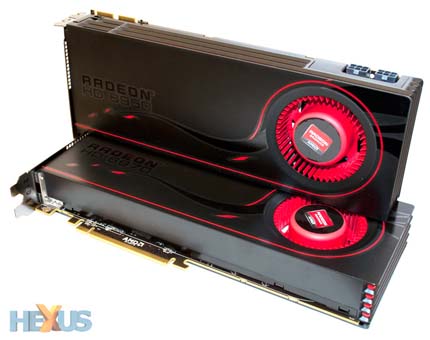Final thoughts and rating
We've taken a long, hard look at the two new Cayman cards and crunched a lot of numbers, so let's wrap up the Radeon HD 6970 and HD 6950 high-end GPUs.
Experimental phase
AMD has experimented with the new Cayman GPUs by changing the architectural layout with a view to focussing intently on geometry processing, taking a leaf out of NVIDIA Fermi's book. Refinements to the shading core and general tweaks to most portions of the GPU translate to a cleaner design than the incumbent single-GPU AMD champ, Radeon HD 5870.
Expecting more?
Such is the advancement in graphics-card power, that one would expect the new Cayman cards to offer substantially more performance than the year-old HD 5870 GPU. However, while both Radeon HD 6970 and HD 6950 are better GPUs, AMD's found it difficult to master big-die technology - much like how NVIDIA struggled with first-generation Fermi.
Difficult bring-up
The upshot of an experimental design and difficulties with ramping up speed on a 2.64bn-transistor die means that the Radeon HD 6870 is between 15-20 per cent faster than the Radeon HD 5870 card it effectively replaces in the AMD performance stack. Tellingly, it's about the same speed as a GeForce GTX 570 and, no matter which way you cut it, slower than a GTX 580.
There are some nice touches - a 2GB frame-buffer; EQAA; PowerTune technology; and massive geometry improvement - but AMD's performance deficit against NVIDIA actually plays nicely for the consumer. The Radeon HD 6970 is mooted to come in at a £299 retail price, though we think it needs to be pitched at GTX 570 levels (£260) to prise potential customers from going down the NVIDIA route.
Radeon HD 6950 a better bet
We look upon the £225 Radeon HD 6850 2GB card in a kinder light. It's a good GPU for the money, notwithstanding the £260 asking price for a bone-stock GTX 570, and is priced low enough to encroach on the space occupied by pre-overclocked Radeon HD 6870 and GeForce GTX 470 GPUs that are plain slower.
AMD has had a difficult job in following the excellent Radeon HD 5870/50 cards with a GPU that really raises the bar again. NVIDIA's made that job even harder by introducing quality high-end GeForce GTX 500-series cards in the last two months What's more, performance junkies can also consider putting £250-£300 of their money into multi-GPU setups, which'll provide higher frames per second.
Bottom line
Ultimately, the Radeon HD 6970 and HD 6950 are good GPUs that come to market a little too late. A September 2010 launch would have been ideal, along with a little more perf, but the re-emergence of NVIDIA as a high-end GPU force and the benchmark level set by the year-old Cypress GPU makes them, in December 2010, more average than special. Cayman, then, is more of a transitional architecture than epoch-making graphics card.
If it was our money at stake, dear reader, we'd look past the HD 6970 and go for the HD 6950, especially if you can grab one at around £220.
The
Good
Forward-looking architecture; reliance on geometry processing
Feature-set continues to grow- PowerTune and EQAA, etc.
Both cards are quiet under load
The
Bad
Not as fast as GeForce GTX 580; we expected more performance
Radeon HD 6970 only 15-20 per cent faster than year-old HD 5870
Not solely AMD's fault, but where are the triple-A games to justify
investment?
HEXUS Rating

















